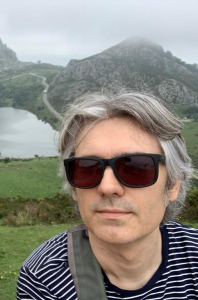
Welcome to the next PoreLab lecture!
Who: Juan Hidalgo from The Institute of Environmental Assessment and Water Research (IDAEA) at the Spanish National Research Council (CSIC), Barcelona, Spain
Juan Hidalgo is a researcher at the Institute of Environmental Assessment and Water Research (IDAEA) of the Spanish National Research Council (CSIC) in Barcelona, Spain. He does his research on flow and solute transport in porous media by means of both experiments and numerical modeling. In particular, he is interested in the influence of heterogeneity on the mixing (dissolution) and spreading (extension) of contaminants.
When: Monday March 11th at 14:30 (Norway time).
Where:
Juan Hidalgo will give an in-person talk in the common room (PoreLab Trondheim), and online in the Kelvin room (PoreLab Oslo). From anywhere else, you will be able to join via the following Zoom link:
https://uio.zoom.us/j/65837085049?pwd=WjZianUyN3FJa2liQkxBbzQrOCtGdz09
Title: Convective mixing in heterogenous porous media
Abstract:
The dynamics of convective mixing are controlled by the medium and fluid properties. Determining how the heterogeneity of the porous medium affects convective instabilities is important to understand the behavior of geophysical fluids systems (e.g., geothermal groundwater systems, CO2 storage) and industrial applications (e.g., heat conduction in metallic foams). Permeability heterogeneity under unstable flow is responsible for the shape and extension of the plume and velocity at which the plume travels. Heterogeneity and anisotropy accelerate the onset of convection of density driven fingers, although permeability barriers can delay or suppress it. Heterogeneity affects the shape of the fingering patterns. Depending on the heterogeneity structure it induces channelization by stretching the fingers shape, which can accelerate the breakthrough of contaminants and decrease the efficiency of contaminant removal. However, it can also retard the instability formation turning fingering structures into irregular dispersive fronts. The shape and evolution of the unstable patterns impacts fluid mixing and dissolution. However, there is still no clear correlation between the observed flux and instability behavior and heterogeneity. To study the relation between the behavior of the unstable flow and heterogeneity, we consider a modification of the Horton-Rogers-Lapwood problem, in which the instability is driven by the temperature difference between the top and bottom boundaries. We perform numerical simulations under different scenarios of heterogeneity. We analyze the relation between heterogeneous permeability fields and scalar distribution patterns, fluid deformation, convective velocity structure, and mixing efficiency. Simulations are complemented with experiments in heterogeneous Hele-Shaw cells.
